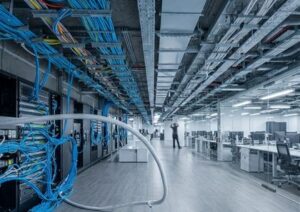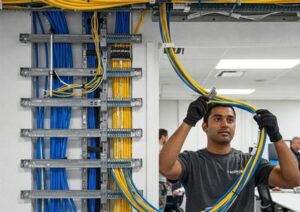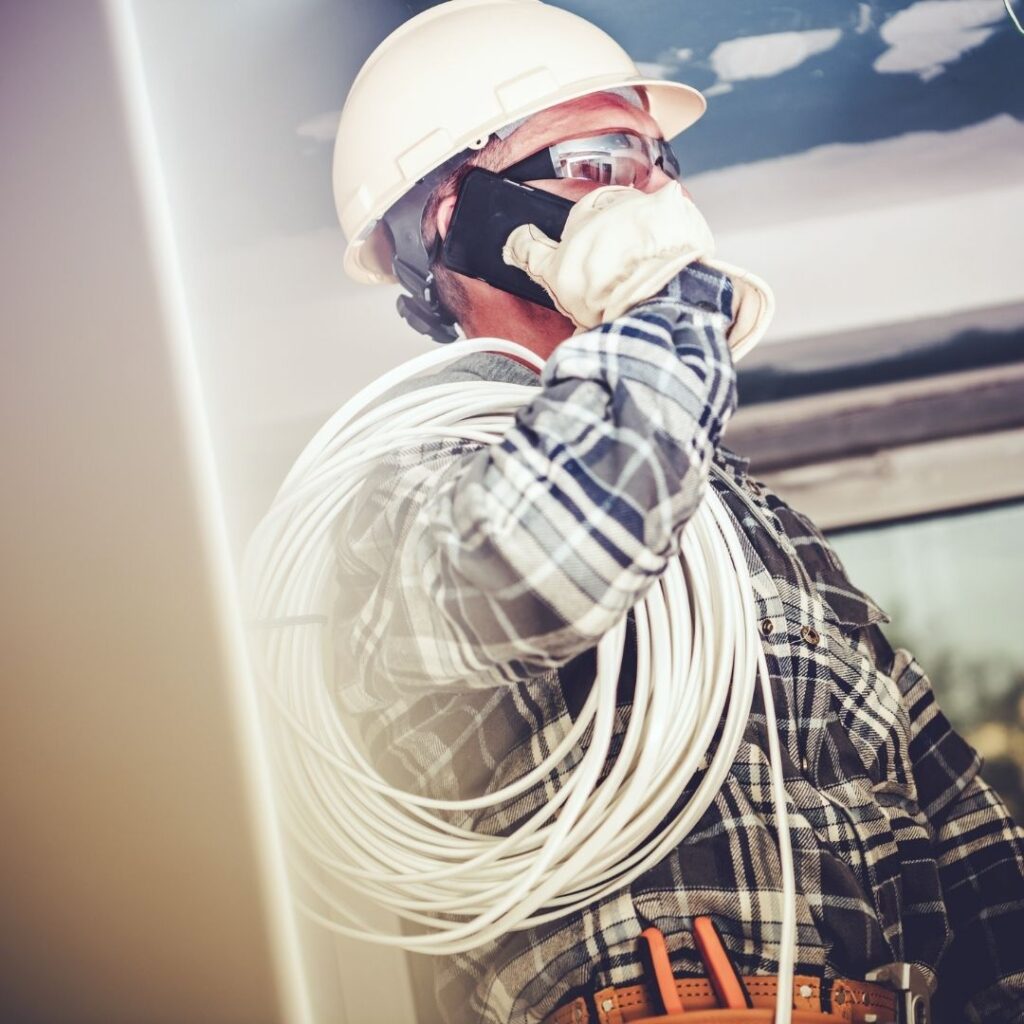In today’s digital-first business environment, professional commercial data cabling forms the critical infrastructure supporting virtually every organizational operation. Unlike residential installations, network cabling requires specialized design, materials, and installation techniques to meet the demanding requirements of modern enterprises. This comprehensive guide explores the importance of high-quality network cabling, its key components, and best practices for ensuring optimal network performance in business settings.

Understanding Commercial Data Cabling Systems
Network cabling refers to the structured network infrastructure designed specifically for business environments, supporting data, voice, video, and other communication services. These systems differ significantly from basic residential setups in scale, complexity, and performance requirements. A properly installed commercial data cabling system provides the foundation for reliable network connectivity across entire office buildings, retail spaces, and industrial facilities.
The architecture of network cabling typically follows international standards like TIA-568 or ISO/IEC 11801, ensuring compatibility and performance across different manufacturers’ equipment. These standards define everything from cable types and connection methods to testing protocols and performance benchmarks. For businesses considering upgrades, consulting with a professional Office Electrician Sydney can help determine the most appropriate cabling solution for specific commercial needs.
Key Components of Commercial Data Cabling
Professional commercial data cabling installations consist of several essential elements that work together to create a cohesive network infrastructure. The entrance facility serves as the demarcation point where external telecommunications services connect to the building’s internal cabling system. This critical juncture often requires coordination between network cabling installers and internet service providers.
Equipment rooms house the core network gear that powers the entire commercial data cabling system. These centralized locations contain servers, switches, and patch panels that distribute connectivity throughout the facility. Proper design of these spaces considers factors like cooling, power requirements (sometimes involving Power Factor Correction Device installations), and physical security.
Horizontal cabling forms the physical connections between telecommunications rooms and work areas in a network cabling system. This component typically uses twisted pair copper cables (Cat6/6A) or fiber optics, carefully installed to prevent interference and maintain signal integrity over longer distances than residential applications require.
Benefits of Professional Commercial Data Cabling
Investing in quality network cabling offers numerous advantages that directly impact business operations and bottom-line results. The scalability of these systems allows for seamless expansion as network needs grow, without requiring disruptive and costly infrastructure overhauls. This future-proofing capability makes commercial data cabling particularly valuable for growing businesses anticipating technological advancements.
Network reliability improves dramatically with properly installed network cabling, significantly reducing downtime and connectivity issues that plague makeshift solutions. Unlike consumer-grade installations, commercial systems undergo rigorous testing and certification to ensure they meet performance specifications under heavy business workloads.
Long-term cost efficiency represents another compelling benefit of commercial data cabling systems. While the initial investment typically exceeds basic solutions, the reduced maintenance costs, easier troubleshooting, and simplified upgrades often deliver substantial ROI over time. The organized nature of these systems also minimizes labor costs for moves, adds, and changes to network infrastructure.

Design Considerations for Commercial Installations
Effective commercial data cabling begins with careful planning tailored to each business’s specific requirements and growth projections. Cable pathway design must account for both current needs and future expansion, ensuring adequate space for additional runs when necessary. Professional designers consider factors like bend radius, separation from electrical interference sources, and accessibility for maintenance when planning pathways.
The choice between copper and fiber optic cabling in network cabling systems depends on various technical and business factors. Copper cabling (Cat6/6A) remains the standard for most horizontal runs to workstations, while fiber optics excel in backbone applications and situations requiring immunity to electromagnetic interference. A qualified Data Electrician can assess these options and recommend the optimal mix for specific commercial applications.
Proper documentation forms a critical yet often overlooked aspect of commercial data cabling projects. Comprehensive records of cable routes, termination points, and test results simplify future maintenance and troubleshooting. This attention to detail distinguishes professional installations and proves invaluable when network modifications become necessary.
Installation Best Practices
The installation process for commercial data cabling requires meticulous attention to industry standards and manufacturer specifications. Cable pulling techniques must avoid excessive tension or sharp bends that could damage conductors and impair performance. Professional installers use appropriate tools and methods to ensure cables remain undamaged throughout installation, particularly important in commercial environments with longer cable runs.
Termination quality significantly impacts the performance of network cabling systems. Proper termination techniques at both ends of each cable ensure optimal signal transmission and minimize crosstalk or interference. This precision work often requires specialized tools and trained technicians to achieve reliable results in demanding commercial environments.
Testing and certification represent the final critical steps in commercial data cabling installation. Comprehensive testing verifies that all components meet specified performance standards before the system becomes operational. These quality assurance measures help identify and correct any issues that could affect network reliability under real business workloads.
Integration with Building Systems
Modern commercial data cabling increasingly intersects with other building infrastructure systems, requiring careful coordination during design and installation. In office environments, cabling pathways often share spaces with electrical conduits, necessitating proper separation to prevent electromagnetic interference. This coordination sometimes involves collaboration between Commercial Electrician Services and data cabling specialists.
Building automation systems present unique challenges for commercial data cabling installers, as these networks often carry both data and power (PoE) to various control points. Proper cable selection and installation techniques ensure reliable operation of these critical systems that control lighting, HVAC, and security functions.
In industrial settings, commercial data cabling must often interface with control systems installed by Controls Electrician professionals. These hybrid environments demand cabling solutions that can withstand harsh conditions while maintaining data integrity for sensitive automation equipment.
Emerging Trends in Commercial Cabling
The field of network cabling continues evolving to support new technologies and increasing bandwidth demands. Higher category copper cables (Cat8) are emerging to support 25G/40G Ethernet over twisted pair, potentially extending the relevance of copper in commercial environments. These advancements allow commercial data cabling systems to remain viable in an era of growing bandwidth requirements.
Power over Ethernet (PoE) technology has become a major consideration in modern commercial data cabling design. The latest PoE standards (802.3bt) can deliver up to 90W per port, enabling a single cable to power devices like digital signage, security cameras, and even some workstations. This convergence creates new opportunities and challenges for commercial infrastructure planning.
Intelligent infrastructure management systems are transforming how organizations monitor and maintain their commercial data cabling. These solutions provide real-time visibility into the physical layer of networks, simplifying troubleshooting and asset management. The integration of smart technologies represents the next frontier in commercial cabling evolution.

Choosing a Commercial Cabling Provider
Selecting the right provider for commercial data cabling installation and maintenance requires careful evaluation of several key factors. Certifications from organizations like BICSI demonstrate a provider’s commitment to industry standards and best practices. Experienced professionals bring valuable insights that can optimize system design and performance for specific business applications.
Portfolio and references offer tangible evidence of a provider’s capabilities with commercial data cabling projects similar to your needs. Case studies and client testimonials can provide valuable insights into what you can expect from their services. Companies like Lightspeed Electricals combine technical expertise with practical experience to deliver reliable commercial solutions.
Service offerings should align with your current and anticipated future needs for network cabling. Comprehensive providers can handle everything from initial design through installation, testing, and ongoing maintenance. This end-to-end capability ensures consistency and accountability throughout the system lifecycle.
Conclusion: Investing in Business Connectivity
Professional commercial data cabling provides the robust foundation that modern businesses require to operate efficiently and competitively. From small offices to large corporate campuses, these systems offer unmatched reliability, scalability, and performance when properly designed and installed. The initial investment in quality network cabling pays dividends through reduced IT challenges, simplified expansions, and minimized network downtime.
As technology continues advancing, the principles of structured commercial data cabling remain relevant by adapting to support new applications and higher performance requirements. Businesses that prioritize this critical infrastructure position themselves for success in an increasingly digital marketplace. For organizations seeking expert guidance, professional providers offer the knowledge and experience needed to implement optimal cabling solutions tailored to specific commercial requirements.


